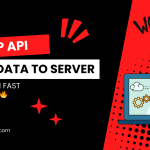The Best Fluffy Pancakes recipe you will fall in love with. Full of tips and tricks to help you make the best pancakes.
The Rise of Edge Computing in IoT
Edge computing has emerged as a game-changer in the field of IoT, offering a decentralized approach to data processing that brings computation and storage closer to the data source. This shift from traditional cloud-based processing to edge computing has opened up a world of possibilities for enhancing performance and security in IoT applications.
Enhanced Performance Through Edge Computing
By processing data closer to where it is generated, edge computing reduces latency and improves real-time processing capabilities. This means that IoT devices can make faster decisions and respond more swiftly to changing conditions, leading to enhanced operational efficiency and improved overall performance.
Securing IoT Data with Edge Computing
Security is a critical concern in the world of IoT, where vast amounts of sensitive data are being collected and transmitted. Edge computing addresses this challenge by keeping data local, minimizing the need to transmit information over networks where it could be vulnerable to interception. By processing data at the edge, organizations can implement robust security measures tailored to their specific needs, ensuring that sensitive information is protected at all times.
The Future of Edge Computing in IoT
As the adoption of IoT devices continues to grow across industries, the role of edge computing in enhancing performance and security will only become more prominent. By leveraging the power of edge computing, organizations can unlock new levels of efficiency, agility, and innovation in their IoT deployments, paving the way for a smarter and more connected future.




